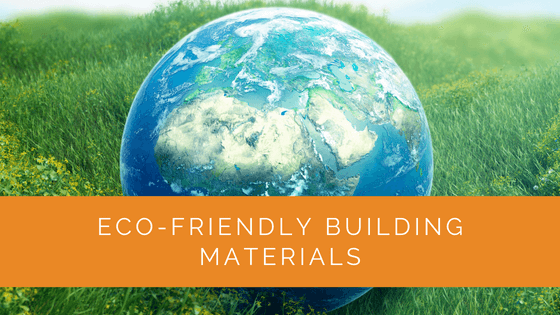In a world where sustainability is becoming increasingly paramount, the choice of building materials plays a pivotal role in mitigating environmental impact. This article delves into an informative exploration of construction options that are kind to the planet and offer practical advantages. In the face of rising housing challenges and the pressing realities of climate change, eco-friendly building materials have emerged as a beacon of hope, reducing energy consumption and contributing to a greener, more sustainable future.
Contents
- 1 Key Takeaways
- 2 What do Eco-Friendly Building Materials Entail?
- 3 The Uptick of Natural and Recycled Construction Materials
- 4 Case Study: Integrating Eco-Friendly Building Materials in a Solar-Powered Home
- 5 Expert Insights From Our Solar Panel Installers About Eco-Friendly Building Materials
- 6 Build Green for a Future That’s in the Pink
Key Takeaways
- Eco-friendly building materials are essential for creating energy-efficient and sustainable structures that reduce carbon emissions and lower energy costs.
- Some noteworthy eco-friendly building materials include straw bales, bamboo, hempcrete, reclaimed wood, and recycled steel, all offering various benefits such as high insulation, durability, and environmental friendliness.
- Innovative materials like polyurethane foam, cork, recycled plastic, sheep’s wool, and ferrock also make strides in sustainable construction, offering alternatives to traditional building materials with eco-conscious advantages.
What do Eco-Friendly Building Materials Entail?
Reduced energy consumption and informed material selection are more important than ever because of the inevitable rise in housing challenges and the effects of climate change on the world.
Eco-friendly building materials are those that can be easily recycled and don’t damage the environment during their creation, usage, or disposal.
The long-term benefits of using eco-friendly materials are enormous. Green home construction dramatically lowers carbon emissions and uses less energy, which leads to lower energy costs and assists you in saving money.
The Uptick of Natural and Recycled Construction Materials
Investing in environmentally friendly construction results in a structure with lower carbon dioxide emissions, improved energy efficiency, and enhanced public perception of the organization as being environmentally conscious.
Time for a candid admission: despite our best efforts, we could not limit the number of material features. Simply put, there were too many excellent materials, and it would be unfair not to mention them all.
So be patient with us, and you’ll discover some surprises. Here are 15 of the most remarkable eco-friendly construction materials that are redefining the construction sector.
1. Straw Bale
Old things have a fresh lease on life! In the Great Plains, the pioneers built their houses from straw bales. This method has now been modernized for the twenty-first century.
Straw can be harvested using waste products from the agriculture sector. It serves as a lumber alternative while also capturing carbon. Remember that they won’t be as thin as a typical stick-frame house. The R-Value of these substantial, well-insulated walls is exceptionally high. Contrary to popular belief, straw bale houses can complement your preferred aesthetic and are fire-resistant.
These residences’ remarkable comfort level will impress visitors. The structures remain warmer in the winter and colder in the summer.
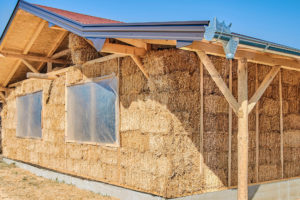
2. Bamboo
One of the most eco-friendly building materials, bamboo has an extraordinarily high generation rate. After harvest, it spreads and grows further without needing to be replanted. Except for Antarctica and Europe, bamboo grows practically everywhere and is a perennial grass, not wood.
Furthermore, it is stronger than concrete and brick, has a significant weight-to-strength proportion, and lasts a very long time. The ideal material for flooring and cabinets is bamboo.
However, it needs treatment to fend off rot and insects. Otherwise, the starch it contains will attract rot and pests and cause it to fracture or expand as it absorbs water.
3. Hempcrete
This eco-friendly substance resembles concrete and is formed from the inner woody fibers of hemp plants. The fibers are combined and bound with lime to create light, sturdy shape blocks that resemble concrete blocks.
It is lightweight and significantly reduces the energy required to carry blocks. Hempcrete is strong and has exceptional acoustic, thermal, and fire resistance properties.
It is also one of the fastest growing sustainable properties and absorbs more carbon dioxide than it emits due to its negative carbon dioxide content reading. As a resource, hemp itself is abundant and expanding quickly.
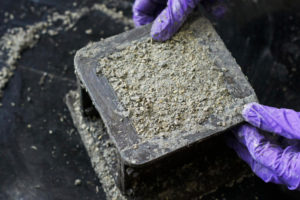
4. Rammed Earth
One of the earliest long-lasting methods of building structures is earth construction. Consider the Great Wall of China! These days, it is used to build striking, durable walls that mimic sedimentary rocks in opulent mansions.
By allowing the sun to warm them throughout the day and then gradually releasing the warmth during the cool evenings, rammed earth floors or walls can be utilized as thermal storage.
This low-carbon method employs forms in which layers of soil and binder are deposited before applying pressure to produce a tough and long-lasting surface.
These blocks, which any mason may erect, are made from low- or even no-cement waste materials that come from quarries.
5. Reclaimed Wood
One of the most well-known building materials in use today is wood. However, most of the wood may be destroyed while processing raw timber into wood planks and boards.
This waste material can also be employed to create engineered wood walls, panels, doors, and other structural components. In contrast to solid hardwood, engineered wood has multiple layers. Typically, the center layers are constructed of softwoods, wood fibers, or other types of scrap wood.
6. Concrete Molds with Insulation
In insulated concrete forms, there is a void between two insulation layers. After inserting the reinforcement, concrete is splashed into the area, which has a structure for supporting the bars.
They are less dense, easy to handle, fire-resistant, and have effective acoustic and thermal insulation properties.
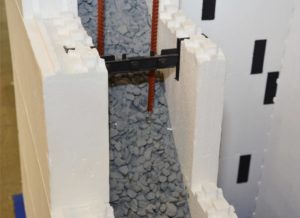
7. Cob
Ever wonder what those intriguing, organic-looking houses are constructed of? They are made of a substance called cob, a combination of subsoil, water, brittle organic matter, and occasionally lime.
The oldest known mud building dates back more than 10,000 years, in case you didn’t know. Carbon emissions and global warming on top of the housing crisis definitely got us thinking about alternatives, and one of the materials making a modest comeback is cob.
In addition to being eco-friendly, cob is an organic substance that is simple to work with and, thanks to its texture, allows you to make any design you can think of. It is extremely energy-efficient and produces natural insulation. Due to this, cob homes don’t require much heating.
8. Bark Siding
By using tree bark as a construction material, sustainable forestry methods are evolving to new heights. Bark siding and bark shingles may not be familiar to you, but they are actually long-lasting, beautiful, affordable, and sustainable siding and shingling options.
Bark for construction projects originates from already-cut trees. You see, in the past, the bark was burned, thrown away as trash, or in some cases, used to make mulch. It is saved from this destiny and used as a highly eco-friendly substitute for conventional shingling and siding building materials.
Bark siding has a lifespan of up to 100 years without any sealing, painting, or routine maintenance. There is no chemical discharge because there is no paint or stain.
The bark is sterilized against fungus and bugs after being extracted from the already-felled trees; this sterilization procedure uses no pesticides or other dangerous chemicals. Additionally, kiln-dried bark won’t ever shrink or distort when installed.
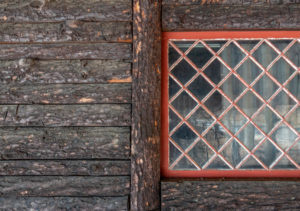
9. Precast Concrete
The precast concrete slabs are created at a manufacturer’s facility and delivered to construction sites in whole portions. Some, like concrete blocks, are composed exclusively of concrete but contain substantial empty air spaces.
Precast concrete slabs can withstand a variety of weather conditions, making them ideal for walls and high-rise facades. Some slabs can also be used for floors and flat roofs.
Concrete is a cost-effective building material and an excellent technique for managing heat inside a structure. Precast concrete slabs are more environmentally friendly than many typical concrete choices since they require less energy to develop and build.
They can also be adequately cured in a controlled setting by precasting instead of being exposed to various unfavorable weather conditions while drying at a worksite. Due to this, concrete slabs prevent eventual demolitions by minimizing fissures and structural issues with the concrete.
10. Recycled Steel
Materials that retain their properties after being recycled include recycled steel. Did you know that the most recycled material worldwide is steel? Every year, steel recycling surpasses that of plastic, paper, aluminum, and glass.
When recycled steel is used in construction, you can be sure the final product will be sturdy and long-lasting. It also reduces energy expenditures significantly.
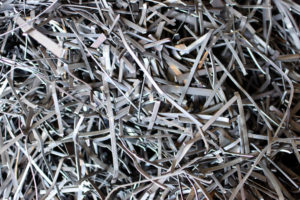
11. Polyurethane Foam
Buildings have historically used rigid foam as insulation. It was initially employed after a renowned surfboard material producer received a fine from the United States Environmental Protection Agency (EPA) and lost business as a result of using a harmful ingredient. The business for surfboards was revitalized by the use of plant-based polyurethane foam, which was produced from bamboo, kelp, and hemp.
It is now used to produce furniture and turbine blades, among other things. The substance can be utilized for insulation because it is rigid and largely immobile. It also provides a defense against bugs and mold.
Additionally, it can be the ideal sound insulation material and is heat-resistant as well as pest and mold-resistant.
12. Cork
The next time you open up that delicious bottle of wine, remember there is an alternative for cork than the dumpster.
The cork oak tree, one of the most renewable and environmentally benign resources, is used to make cork. Building cork ceiling tiles, acoustic walls, and flooring are just a few applications of this beautiful green buoyant material.
Cork is a strong, liquid- and moisture-resistant substance. Vibration can be absorbed by it because of its structure. Harvesting cork can aid in the effort to combat global warming.
13. Recycled Plastic
While the plastic bags we use every day take 10–20 years to break down, plastic water bottles take 450 years, and plastic products take thousands of years to break down in landfills. It’s time to begin cleaning up our planet and reusing all the plastic waste we have left to float freely in our parks, beaches, and houses.
Companies that generate construction materials from recycled plastic using a carbon-neutral, non-toxic processing technique produce substantially lesser greenhouse gas emissions than concrete blocks.
Recycled plastic is a robust and resilient material that is excellent at preserving sound. In the long run, reducing waste by creating this “green circle” and utilizing what we currently have will help.
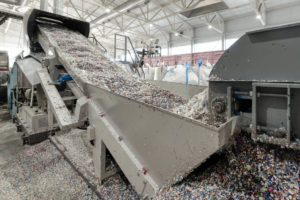
14. Sheep’s Wool
An excellent substitute for chemical-laden insulation material is wool from sheep. It can insulate houses like regular insulation and uses less energy during production.
It can improve the building’s energy efficiency and soundproofing capabilities. Unlike other natural insulating materials like cotton and straw bales, it won’t break down soon. It is more widespread, simple to harvest, and develops quickly.
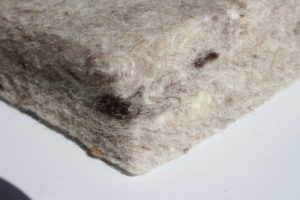
15. Ferrock
The iron-rich ferrous rock is created from recyclable resources, including glass- and steel-ground silica and scrap steel dust. It is typically used as a substitute for cement in building homes. The ability of ferrock to absorb, bind, and generally reduce pollution is excellent.
It is a remarkably tough and resilient material that is used for marine constructions, such as architectural features exposed to seawater. Ferrock has five times the strength of Portland cement!
Furthermore, it weighs between 10% and 25% less than a brick-built building. The actual ferrock development process is quite sustainable.
Case Study: Integrating Eco-Friendly Building Materials in a Solar-Powered Home
Background
At Solar Panels Network USA, we have always prioritized sustainability in our projects. Recently, we undertook a project to build a solar-powered home using eco-friendly building materials. The goal was to demonstrate how combining solar energy with sustainable construction practices can create an efficient, environmentally friendly home.
Project Overview
Our project involved constructing a residential home that not only relied on solar energy but also incorporated various eco-friendly materials. This home was designed to minimize environmental impact, reduce energy consumption, and showcase the benefits of green building materials.
Implementation
Material Selection
We began by selecting materials that offered sustainability, durability, and energy efficiency. The chosen materials included bamboo for flooring and cabinets, hempcrete for wall construction, and reclaimed wood for structural elements. These materials were selected for their low environmental impact and excellent performance characteristics.
Construction Process
- Foundation and Walls: We used rammed earth for the foundation and hempcrete for the walls. These materials provided excellent insulation and thermal mass, helping to maintain a stable indoor temperature.
- Insulation: For insulation, we chose sheep’s wool and polyurethane foam. Both materials are natural, non-toxic, and provide superior thermal performance.
- Roofing and Siding: The roof was constructed using recycled steel, known for its durability and recyclability. For the siding, we opted for bark shingles, which are not only eco-friendly but also highly resistant to weather and pests.
Solar Integration
We installed a state-of-the-art solar panel system on the roof, ensuring that the home could generate all the electricity it needed. The system included high-efficiency panels and a battery storage solution to provide power during non-sunny periods.
Results
The project resulted in a home that was both energy-efficient and environmentally friendly. The use of eco-friendly materials significantly reduced the carbon footprint of the construction process. The solar energy system provided reliable, renewable power, eliminating the need for fossil fuels.
- Energy Savings: The home achieved a net-zero energy status, meaning it produced as much energy as it consumed. This was a significant milestone in demonstrating the feasibility of sustainable living.
- Environmental Impact: By using materials like bamboo, hempcrete, and recycled steel, we reduced waste and minimized the use of non-renewable resources. The home’s design also ensured minimal heat loss, reducing the need for additional heating and cooling.
- Comfort and Aesthetics: The eco-friendly materials not only performed well but also added to the home’s aesthetic appeal. The natural textures and colors of materials like reclaimed wood and bamboo created a warm, inviting environment.
Summary
This project was a successful demonstration of how eco-friendly building materials can be integrated into solar-powered homes to create sustainable, efficient, and beautiful living spaces. By combining advanced solar technology with sustainable construction practices, we can build homes that are not only good for the environment but also cost-effective and comfortable. At Solar Panels Network USA, we are committed to continuing our efforts in promoting and implementing green building solutions.
Expert Insights From Our Solar Panel Installers About Eco-Friendly Building Materials
Choosing eco-friendly building materials is one of the best decisions you can make for a sustainable future. Materials like bamboo and recycled steel not only reduce environmental impact but also offer exceptional durability and efficiency.
Lead Solar Installer
Eco-friendly building materials have come a long way in terms of availability and performance. Options like hempcrete and reclaimed wood are not only sustainable but also highly effective in creating energy-efficient homes.
Solar Energy Specialist
Incorporating materials like straw bales and polyurethane foam into construction projects significantly lowers carbon footprints. These materials are innovative, practical, and set new standards for green building.
Senior Solar Consultant
Build Green for a Future That’s in the Pink
Natural materials have traditionally been used in luxurious residences. However, modern technologies and methods frequently use tried-and-true components in unexpected ways. Many of these methods were employed in the past and are now becoming more popular.
There are several green building materials on the market right now, and their main benefits include energy conservation. However, the goal of adopting such environmentally responsible building materials is to create a building structure that is both durable and sustainable while also being good for the environment.
So, don’t forget to chip in and ensure that you choose environmentally friendly building materials for your upcoming construction project!
About the Author
Solar Panels Network USA stands at the forefront of solar energy solutions, driven by a team of seasoned solar engineers and energy consultants. With over decades of experience in delivering high-quality solar installations and maintenance, we are committed to promoting sustainable energy through customer-centric, tailored solutions. Our articles reflect this commitment, crafted collaboratively by experts to provide accurate, up-to-date insights into solar technology, ensuring our readers are well-informed and empowered in their solar energy decisions.

